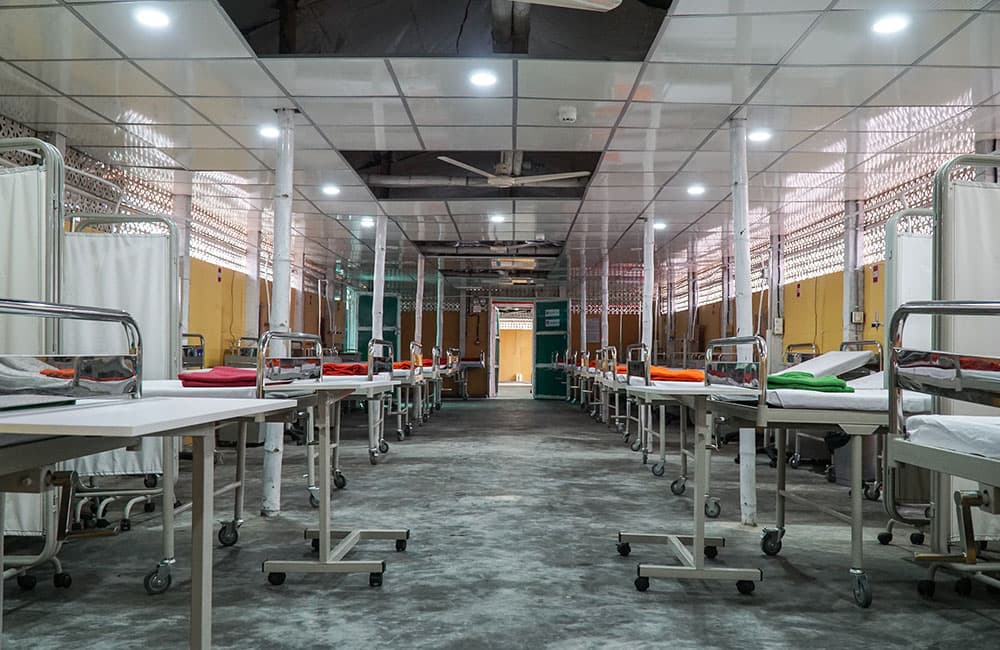Caring for the world’s most vulnerable in the pandemic
Three years ago, when violence erupted in Myanmar 700,000 Rohingya refugees fled to Cox’s Bazar in Bangladesh where they found refuge. They weren’t sure what awaited them, but none of them could have foresaw the pandemic that would come. Nafisa* and her three children were one family that made the journey. Escaping persecution, they travelled for days before reaching safety in the refugee camp.
But now, there’s another threat for these vulnerable families. COVID-19 has spread, worrying the communities who live in densely-packed makeshift settlements, share communal bathrooms and have difficulty accessing clean water.
Nafisa heard of COVID-19 back in March. It was nerve-wracking for her to think the virus could spread in her home. “We have problems accessing water here. Where we collect water is far away and the well is very hard to pump. There are only four toilets here (in Nafisa’s area of the camp) and those are already full. There is no separate bathing space here. It is very difficult to live here. How could we be hygienic in such a situation?”
Catching COVID-19
The fear of her family catching COVID-19 weighed heavily on Nafisa. “I’m worried for my daughter who always gets sick. I only fear for her. My two sons are in good health. I worry about my daughter. She always gets a cold and cough.”
And then it happened. “One of my children had a cough and I had a cold. I went to [the Save the Children] hospital. There, I was told to wait in a separate (isolation) room because my daughter and I had colds.”
Nafisa tested positive to COVID-19 and was admitted to the Save the Children isolation and treatment centre, along with her six-year-old daughter Sufia*. Her two sons, eight-year-old Nasib* and three-year-old Hasif* were looked after in a separate part of the hospital by staff.
The isolation and treatment centre was set up in March, thanks to the generosity of Save the Children supporters. It is staffed by an expert team of 80 health professionals and support staff, including Save the Children’s Emergency Health Unit, who have extensive experience in managing disease outbreaks. It has 54 inpatient beds, five stabilisation beds and a delivery area. Our care for patients in the camp with suspected cases of COVID-19 also includes community-based surveillance and home-based care for children and adults with suspected cases of COVID-19.
“They (Save the Children’s medical staff) treated me well and took good care of us,” says Nasifa. “They checked our blood pressure and body temperature in the morning at 7am. They used to examine us in the same way in the afternoon, evening and at night as well. Then they provided us with treatment according to our results. They tested us and supported us in every way."

Save the Childen’s isolation and treatment centre in the Rohingya refugee camp provides care for confirmed and suspected COVID-19 patients from both the Rohingya refugee community and the local community in Cox’s Bazar. Photo: Catherine McGowan / Save the Children
Support for the boys
Nasfisa’s two sons were also looked after in the hospital while she and her daughter received treatment. “They also gave my children and I mental health support so we could stay strong,” she says. “They talked to us nicely and gave us good food. They provided us with all the support we needed. They did everything for me there.”
Nasib, too, was grateful for the chance to be taken care of with his brother in the centre and stay close to his family. “When my sister and mother were sick and taken to hospital, I went with them. They gave us medicine, food and toys to play with. I was scared when my mother and sister were sick. I felt good on the day we were released from the hospital.”
Looking forward to the future
Having recovered from COVID-19, Nasfisa now looks forward to the day her children can go back to school and play with others. It’s thanks to generous supporters that Save the Children was able to care for Nafisa and her children. As the pandemic continues to rage around the world, the Rohingya refugees can feel safe in the knowledge that they too will be looked after.
- Names have been changed to protect privacy